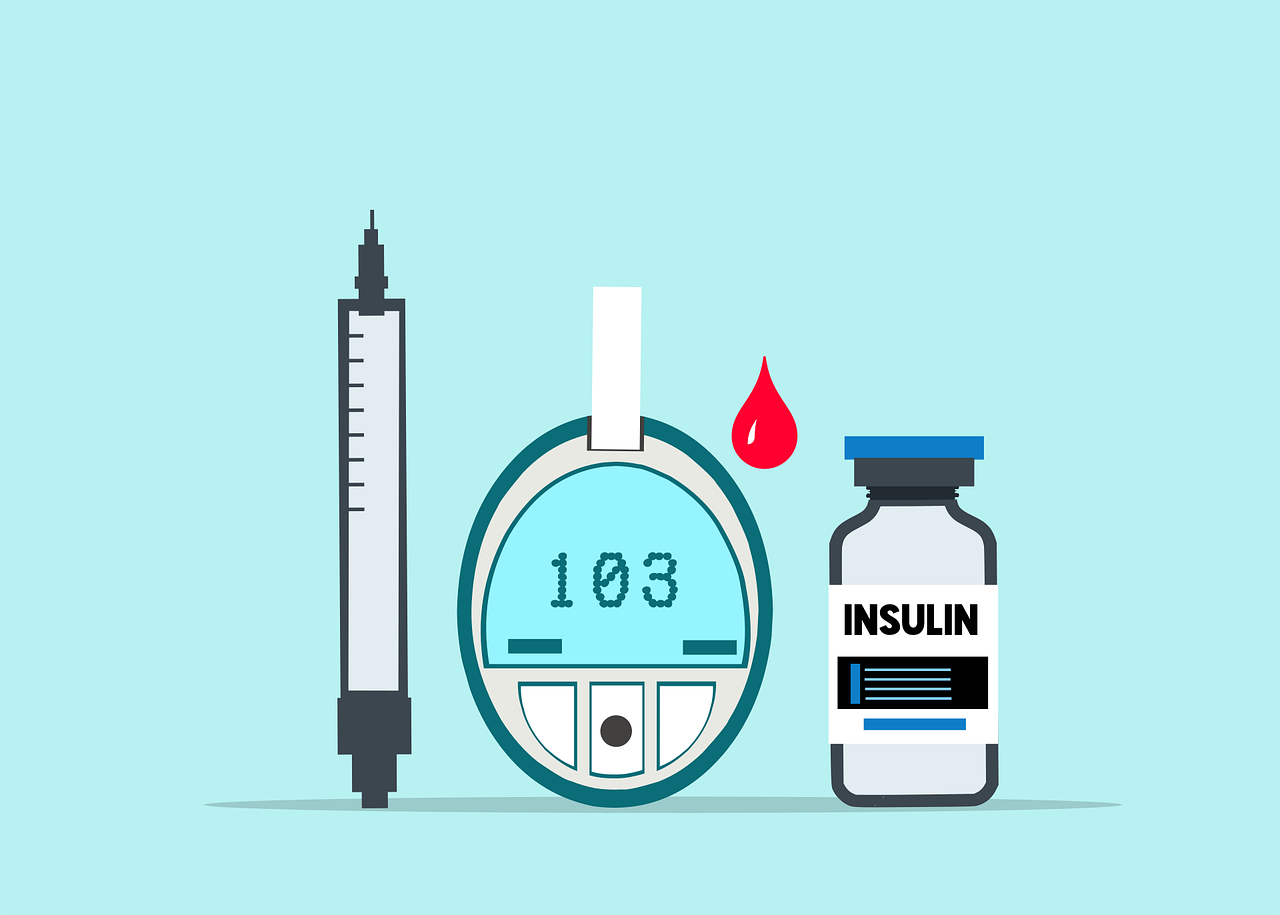
Breathing – it’s the essence of life. For many, each breath comes naturally, without a second thought. But for those grappling with respiratory conditions, each inhalation can be a conscious effort, often aided by the reassuring hiss of an inhaler. These pocket-sized devices have transformed respiratory care, offering immediate relief and a promise of a life less hindered by breathlessness. Yet, as with all medical interventions, they come with a caveat: side effects. This guide seeks to navigate the intricate landscape of inhalers, shedding light on their potential side effects, and offering a beacon of knowledge for those seeking to breathe easier. Whether you’re a long-time inhaler user, a concerned caregiver, or just someone keen on understanding more, let’s embark on this journey of discovery together.
What are Inhalers?
At their core, inhalers are medical marvels, designed to deliver specific medications directly into the lungs. This direct route ensures rapid action, often bypassing many of the systemic side effects associated with oral medications. But not all inhalers are created equal. Depending on their purpose and the condition they’re meant to treat, inhalers can be broadly categorized into:
- Rescue Inhalers: As the name suggests, these inhalers are akin to lifeguards. They’re used during emergencies, providing swift relief during sudden bouts of breathlessness or asthma attacks. Their rapid action can be a literal lifesaver, pulling individuals out from the clutches of an impending respiratory crisis.
- Maintenance Inhalers: Think of these as the diligent sentinels, working silently in the background. They’re used daily, aiming to prevent flare-ups and maintain open airways. While they might not offer the immediate relief that rescue inhalers do, their long-term benefits in managing conditions like asthma and COPD are unparalleled.
As we delve deeper into the world of inhalers, it’s essential to understand that while they offer significant benefits, they’re not without their challenges. The side effects, though often mild, can be a concern for many. Let’s explore these effects, inhaler by inhaler, to equip ourselves with the knowledge to use them most effectively.
Common Inhalers and Their Side Effects
In the vast landscape of respiratory care, inhalers stand as pillars of relief and prevention. Each type, with its unique formulation, serves a specific purpose. However, as with all medications, understanding their potential side effects is crucial. Let’s delve deeper into some of the most commonly used inhalers, breaking down their benefits and potential challenges.
Symbicort: The Dual-Action Rescuer
Composition: Symbicort is a combination inhaler that brings together the anti-inflammatory properties of budesonide and the broncho-dilating effects of formoterol.
Primary Use: It’s designed to both reduce inflammation in the airways and relax the muscles around them, making it easier for asthma and COPD patients to breathe.
Common Side Effects:
- Mild Headaches: Often transient and can be managed with over-the-counter pain relievers.
- Sore Throat: A temporary discomfort that can be soothed with warm salt gargles.
- Nausea: Occasional and usually subsides on its own.
Severe Side Effects to Watch Out For:
- Oral Thrush: Persistent white patches in the mouth or a yeast-like taste, signaling a fungal infection.
- Vision Changes: Blurred vision or seeing halos around lights, which may indicate elevated ocular pressure.
- Breathing Difficulties: A paradoxical worsening of breathing shortly after using the inhaler.
Recommendation: Regularly rinsing the mouth after using Symbicort can help prevent oral thrush. If any severe side effects are noted, seeking medical attention promptly is crucial.
Ventolin and Salbutamol: The Immediate Relievers
Composition: Both are essentially forms of albuterol, a fast-acting bronchodilator.
Primary Use: They offer rapid relief from acute asthma symptoms or sudden bouts of breathlessness.
Side Effects:
- Nervousness: A fleeting feeling of anxiety or restlessness.
- Hand Tremors: Mild shaking of the hands, usually transient.
- Elevated Heartbeat: A temporary increase in heart rate, often accompanied by a palpable sensation of the heart “racing.”
Recommendation: Using the inhaler only as prescribed and avoiding overuse can minimize side effects. If palpitations persist or become bothersome, it’s essential to consult a healthcare provider.
Steroid Inhalers: The Inflammation Busters
Composition: These inhalers contain corticosteroids, potent anti-inflammatory agents.
Primary Use: They work over time to reduce inflammation in the airways, making them essential for long-term asthma and COPD management.
General Side Effects:
- Oral Thrush: White patches in the mouth or a distinct yeast-like taste.
- Voice Hoarseness: A temporary change in voice tone.
- Sore Throat: Mild discomfort that can be alleviated with warm gargles.
Recommendation: To reduce the risk of oral thrush, always rinse the mouth after using a steroid inhaler. Using a spacer can also ensure better drug delivery to the lungs, minimizing local side effects.
Advair (also known as Advair Diskus or Advair HFA)
Composition: A combination of fluticasone, a corticosteroid, and salmeterol, a long-acting bronchodilator.
Primary Use: Designed for the long-term management of asthma and COPD, aiming to reduce inflammation and prevent bronchospasms.
Common Side Effects:
- Throat Irritation: Mild discomfort or scratchiness in the throat.
- Headaches: Transient and can usually be managed with over-the-counter remedies.
- Muscle Cramps: Temporary and often mild.
Severe Side Effects to Watch Out For:
- Pneumonia: Especially in COPD patients, symptoms might include fever, chills, and increased mucus production.
- Bone Density Decrease: Long-term use can affect bone mineral density.
- Adrenal Insufficiency: A condition where the adrenal glands don’t produce enough hormones.
Recommendation: Regular bone density scans and monitoring for signs of infections can be beneficial for long-term users.
Fostair
Composition: A blend of beclometasone, a corticosteroid, and formoterol, a bronchodilator.
Primary Use: Treatment of asthma where a combination product is considered appropriate and for COPD.
Common Side Effects:
- Palpitations: A sensation of a racing heart.
- Trembling: Especially in the hands.
- Nervousness: A feeling of increased anxiety or restlessness.
Recommendation: If palpitations become frequent or bothersome, a medical consultation is advised.
Alvesco (Ciclesonide)
Composition: Contains ciclesonide, a corticosteroid.
Primary Use: Maintenance treatment of asthma as prophylactic therapy.
Common Side Effects:
- Nasal Congestion: A stuffy nose or sinusitis.
- Upper Respiratory Tract Infection: Symptoms might include a sore throat, cough, and nasal congestion.
- Joint Pain: Mild and transient aches in the joints.
Recommendation: Regular monitoring and prompt reporting of persistent infections are crucial.
Flovent (Fluticasone Propionate)
Composition: Contains fluticasone propionate, a corticosteroid.
Primary Use: Preventative treatment of asthma.
Common Side Effects:
- Oral Candidiasis: White patches in the mouth signaling a fungal infection.
- Voice Changes: A hoarse voice or speaking difficulties.
- Cough: A persistent dry cough.
Recommendation: Using a spacer and rinsing the mouth post-inhalation can help reduce local side effects.
Seretide
Composition: A combination of fluticasone propionate and salmeterol.
Primary Use: Long-term treatment of asthma and COPD.
Common Side Effects:
- Throat Irritation: A scratchy or sore throat.
- Muscle Cramps: Temporary muscle tightness or pain.
- Sinusitis: Symptoms might include nasal congestion, a reduced sense of smell, and facial pain.
Recommendation: Regular throat examinations and monitoring for signs of muscle issues can be beneficial.
Breo (known as Breo Ellipta)
Composition: A combination of fluticasone furoate, a corticosteroid, and vilanterol, a long-acting bronchodilator.
Primary Use: Maintenance treatment of COPD and asthma.
Common Side Effects:
- Back Pain: Mild to moderate pain in the back region.
- Oral Candidiasis: White patches in the mouth or a yeast-like taste.
- Pneumonia: Especially in COPD patients.
Recommendation: Regular dental check-ups and monitoring for respiratory infections are advised for long-term users.
Primatene Mist
Composition: Contains epinephrine, a fast-acting bronchodilator.
Primary Use: Temporary relief for symptoms of mild, intermittent asthma.
Common Side Effects:
- Nervousness: A fleeting feeling of anxiety or restlessness.
- Trembling: Mild shaking, especially in the hands.
- Rapid Heartbeat: A temporary increase in heart rate.
Recommendation: Due to its potential for overuse and severe side effects, it’s crucial to use Primatene Mist only as directed and consult a healthcare provider if symptoms persist or worsen.
Dulera
Composition: A combination of mometasone furoate, a corticosteroid, and formoterol fumarate, a long-acting bronchodilator.
Primary Use: Control and prevent asthma symptoms.
Common Side Effects:
- Sinusitis: Inflammation or swelling of the sinuses leading to symptoms like nasal congestion and headache.
- Headaches: Transient and can be managed with over-the-counter pain relievers.
- Weight Gain: Possible increase in weight with prolonged use.
Recommendation: Regular monitoring of weight and nasal health can be beneficial for those using Dulera long-term.
Fobumix Easyhaler
Composition: A combination of budesonide, a corticosteroid, and formoterol, a bronchodilator.
Primary Use: Treatment of asthma and COPD where the use of a combination product is appropriate.
Common Side Effects:
- Nausea: A temporary feeling of discomfort in the stomach.
- Throat Irritation: Mild discomfort or scratchiness in the throat.
- Palpitations: A sensation of a racing or fluttering heart.
Recommendation: If palpitations become frequent or bothersome, a medical consultation is advised.
Rescue Inhalers (General)
Composition: Typically contain fast-acting bronchodilators like albuterol or levalbuterol.
Primary Use: Quick relief from acute asthma symptoms or sudden bouts of breathlessness.
Common Side Effects:
- Jitteriness: A feeling of unease or nervousness.
- Increased Heart Rate: A temporary elevation in heartbeat.
- Muscle Tremors: Mild shaking, especially in the hands.
Recommendation: It’s essential to use rescue inhalers only as needed and not as a regular treatment. If usage increases, it may indicate worsening asthma or COPD.
Inhaled Corticosteroids (General)
Composition: Medications like fluticasone, budesonide, mometasone, and others that reduce inflammation in the airways.
Primary Use: Long-term management of asthma and COPD to prevent symptoms and flare-ups.
Common Side Effects:
- Oral Thrush: White patches in the mouth or a yeast-like taste.
- Hoarse Voice: Temporary voice changes.
- Cough: A persistent dry cough.
Recommendation: Using a spacer and rinsing the mouth after inhalation can help reduce the risk of side effects.
Long-Term Effects of Using Inhalers
Inhalers, especially those containing steroids, when used over extended periods, warrant attention. Some potential long-term concerns include:
- Osteoporosis: A condition where bones become brittle, increasing fracture risk.
- Cataracts: A clouding of the lens in the eye leading to decreased vision.
- Elevated Blood Pressure: Consistent high readings can lead to other cardiovascular issues.
Regular medical evaluations can help in early detection and management of these concerns.
Inhalers, while indispensable in the management of respiratory conditions, come with considerations that extend beyond immediate side effects. Prolonged use, especially of certain types of inhalers, can lead to long-term side effects that may not be immediately apparent but can have significant implications over time. Let’s delve into these potential long-term effects and understand their implications.
Bone Health Concerns
Relevant for: Steroid-containing inhalers like Fluticasone, Budesonide, and Mometasone.
What to Know: Chronic use of inhaled corticosteroids may lead to decreased bone mineral density, increasing the risk of osteoporosis and fractures, especially in post-menopausal women and older adults.
Recommendation: Regular bone density scans, adequate calcium and vitamin D intake, and weight-bearing exercises can help mitigate this risk.
Oral Health Implications
Relevant for: Steroid-containing inhalers.
What to Know: Persistent use can increase the risk of oral thrush, a fungal infection, and may lead to dental cavities due to dry mouth.
Recommendation: Regular dental check-ups, maintaining oral hygiene, and rinsing the mouth after using the inhaler can help prevent these issues.
Eye Health Issues
Relevant for: Steroid-containing inhalers.
What to Know: There’s a potential risk of cataracts and glaucoma with long-term use of inhaled corticosteroids.
Recommendation: Regular eye examinations and monitoring for symptoms like blurred vision or halos around lights are crucial.
Metabolic Concerns
Relevant for: Some combination inhalers.
What to Know: Prolonged use might lead to weight gain and changes in metabolism, potentially increasing the risk of conditions like diabetes.
Recommendation: Regular monitoring of weight, blood sugar levels, and adopting a balanced diet and exercise regimen can be beneficial.
Adrenal Suppression
Relevant for: High-dose, long-term use of steroid-containing inhalers.
What to Know: The body’s natural production of steroids can decrease, leading to adrenal insufficiency, a condition where the adrenal glands don’t produce enough hormones.
Recommendation: It’s essential to be aware of symptoms like fatigue, dizziness, and muscle weakness. Regular medical evaluations can help monitor adrenal function.
Increased Risk of Infections
Relevant for: Steroid-containing inhalers.
What to Know: Long-term use can suppress the immune system, increasing the risk of infections, especially respiratory ones like pneumonia.
Recommendation: Staying updated with vaccinations, practicing good hygiene, and monitoring for signs of infections can help in early detection and management.
Mental Health Implications
Relevant for: Some bronchodilators and combination inhalers.
What to Know: There’s a potential for mood changes, anxiety, and depression with chronic use.
Recommendation: Regular mental health check-ins and open communication about any mood changes or emotional distress are vital.
In conclusion, while inhalers play a pivotal role in managing respiratory conditions, being aware of potential long-term side effects is crucial. Regular medical check-ups, proactive monitoring, and open dialogue with healthcare professionals can ensure that the benefits of inhaler therapy far outweigh the risks.
Tips to Minimize Side Effects of Inhalers
- Mouth Hygiene: Always rinse your mouth after using a steroid inhaler. This simple act can drastically reduce the risk of oral thrush.
- Inhalation Mastery: Attend sessions or watch tutorials to master the art of inhalation. It ensures maximum efficacy and minimum side effects.
- Spacers are Your Friends: These devices ensure the medication is adequately atomized, ensuring deeper lung penetration.
- Stay Updated: Regular consultations with your healthcare provider can keep you updated on the latest inhaler technologies and usage techniques.
Inhalers, while transformative in managing respiratory conditions, come with potential side effects. However, with a few proactive measures, many of these side effects can be minimized or even prevented. Here are some practical tips to ensure you get the most out of your inhaler while keeping side effects at bay:
1. Proper Inhalation Technique
- Ensuring you use the inhaler correctly can optimize the medication delivery and reduce the risk of side effects.
- Consider getting a demonstration from a healthcare professional and periodically reviewing your technique.
2. Use a Spacer
- A spacer, when used with metered-dose inhalers, ensures better drug delivery to the lungs and reduces the amount of medication that settles in the mouth or throat.
- This can significantly reduce the risk of oral thrush and hoarseness associated with steroid inhalers.
3. Rinse Your Mouth
- After using a steroid inhaler, always rinse your mouth with water or mouthwash. This can help wash away any residual medication and reduce the risk of oral side effects.
4. Regular Dental Check-ups
- Given the potential oral side effects of some inhalers, regular dental check-ups can help in early detection and management of conditions like oral thrush or dental cavities.
5. Monitor Bone Health
- If you’re on long-term inhaled corticosteroids, consider periodic bone density scans to monitor bone health.
- Ensure adequate intake of calcium and vitamin D and engage in weight-bearing exercises.
6. Stay Updated with Vaccinations
- Some inhalers, especially those containing steroids, can suppress the immune system. Staying updated with vaccinations, especially the flu and pneumonia vaccines, can offer added protection.
7. Avoid Triggers
- If you’re using rescue inhalers frequently, try to identify and avoid potential asthma or COPD triggers. This can reduce reliance on rescue inhalers and associated side effects.
8. Regular Medical Check-ups
- Regular check-ups allow healthcare professionals to monitor your respiratory health, adjust dosages if needed, and check for potential side effects.
9. Use as Prescribed
- Always use the inhaler as directed by your healthcare provider. Overuse can increase the risk of side effects, while underuse can compromise its therapeutic benefits.
10. Stay Informed
- New research and guidelines emerge regularly. Stay informed about your inhaler, potential side effects, and any new recommendations or alternatives.
In conclusion, while inhalers are indispensable tools in respiratory care, being proactive can ensure you reap their benefits while minimizing potential risks. Always maintain open communication with your healthcare provider and report any unusual symptoms or concerns promptly.
Myths and Misconceptions about Inhalers
In the realm of healthcare, myths and misconceptions are not uncommon, and inhalers are no exception. These misconceptions can sometimes lead to apprehension, misuse, or even avoidance of these life-saving devices. Let’s debunk some of the most common myths surrounding inhalers and set the record straight.
Myth 1: Inhalers are a Sign of Weakness
The Truth: Inhalers are medical tools designed to manage and treat respiratory conditions. Using an inhaler doesn’t signify weakness but rather a proactive approach to managing one’s health. Just as someone would wear glasses to see clearly, many use inhalers to breathe comfortably.
Myth 2: If You Start Using an Inhaler, You’ll Be Dependent for Life
The Truth: Inhalers provide medications to control or prevent symptoms of respiratory conditions. While some people might need long-term inhaler therapy, others might use them for shorter durations. The goal is always optimal respiratory health, and the duration of use is determined by individual needs.
Myth 3: Steroid Inhalers are Dangerous because Steroids are Harmful
The Truth: The steroids in inhalers are corticosteroids, which are different from anabolic steroids (used for muscle building). Inhaled corticosteroids are designed to reduce inflammation in the airways, and when used as prescribed, they are safe and effective.
Myth 4: Using Inhalers Can Lead to Weight Gain
The Truth: While systemic steroids (like oral tablets) can lead to weight gain, the doses of steroids in inhalers are much lower and act primarily in the lungs. Any potential systemic effects, including weight gain, are minimal with inhaled corticosteroids when used as directed.
Myth 5: It’s Okay to Share Inhalers with Family or Friends in Need
The Truth: Inhalers are prescribed medications tailored to an individual’s needs. Sharing inhalers can lead to incorrect dosing, potential allergic reactions, or contamination. It’s essential to use only the inhaler prescribed to you.
Myth 6: If You Don’t Feel Immediate Relief, Take More Puffs
The Truth: Overusing an inhaler can lead to increased side effects and decreased effectiveness. Always follow the prescribed dose and consult a healthcare provider if you feel the inhaler isn’t working as it should.
Myth 7: Inhalers are Only for Asthma
The Truth: While inhalers are commonly associated with asthma, they are also prescribed for other respiratory conditions like COPD, bronchitis, and emphysema. The type of inhaler and medication depends on the condition being treated.
Myth 8: Natural Remedies are Better than Inhalers
The Truth: While some natural remedies might offer relief from respiratory symptoms, inhalers are scientifically proven to be effective in managing and treating respiratory conditions. It’s crucial to consult with a healthcare provider before making any changes to prescribed treatments.
In the world of medicine, knowledge is power. By debunking these myths, we hope to empower individuals to make informed decisions about their respiratory health and embrace the benefits that inhalers offer. Always remember to consult with healthcare professionals for any concerns or queries.
Conclusion and Recommendations
The journey through the intricate landscape of inhalers, while enlightening, underscores a fundamental truth: medicine, in all its marvel, is as much about informed choices as it is about therapeutic interventions. Inhalers, with their transformative potential in respiratory care, are no exception.
Conclusion:
Inhalers have revolutionized the way we manage and treat respiratory conditions, offering immediate relief and long-term control. Their efficacy, however, is intertwined with their potential side effects. But as we’ve seen, with awareness, proactive measures, and regular medical consultations, these side effects can be minimized, ensuring that individuals continue to breathe easier and live fuller lives.
Recommendations:
- Stay Proactive: Regularly review your inhalation technique, and don’t hesitate to ask your healthcare provider for a refresher if needed.
- Open Communication: Always maintain a transparent line of communication with your healthcare provider. Report any unusual symptoms, and don’t be afraid to ask questions.
- Educate Yourself: Knowledge is empowering. Stay updated about your specific inhaler, its potential side effects, and any new research or guidelines that emerge.
- Holistic Health: Beyond the inhaler, consider a holistic approach to respiratory health. This includes a balanced diet, regular exercise, stress management, and avoiding known triggers.
- Community Support: Consider joining support groups or forums where you can share experiences, tips, and advice with others navigating similar respiratory challenges.
- Stay Adherent: Ensure you’re using your inhaler as prescribed. Adherence to medication not only optimizes therapeutic benefits but also reduces the risk of complications.
- Stay Vaccinated: Especially for those on inhaled corticosteroids, keeping up with vaccinations can offer an added layer of protection against respiratory infections.
In the end, inhalers, like all medical interventions, are tools. Their efficacy lies not just in their design but in how they’re used. With the right knowledge, proactive measures, and a commitment to one’s health, the world of inhalers can be navigated with confidence and optimism.
Frequently Asked Questions (FAQs) about Inhalers
1. What is the primary purpose of inhalers in respiratory care?
Inhalers are designed to deliver medication directly to the airways, making them effective tools for managing and treating various respiratory conditions. They can provide both immediate relief from acute symptoms and long-term control to prevent flare-ups.
2. Are there different types of inhalers available?
Yes, there are several types of inhalers, including metered-dose inhalers, dry powder inhalers, and nebulizers. Each type has its unique mechanism and is suited for different medications and conditions.
3. How often should I use my inhaler?
The frequency of inhaler use depends on the type of inhaler and the specific condition it’s prescribed for. Some inhalers are used daily for long-term control, while others are used as needed for quick relief. Always follow your healthcare provider’s recommendations.
4. Can I experience side effects even if I use the inhaler correctly?
While proper usage can minimize side effects, it’s possible to experience some even with correct use. It’s essential to be aware of potential side effects and consult your healthcare provider if you have concerns.
5. Is it safe to use multiple inhalers?
Many individuals with respiratory conditions are prescribed multiple inhalers, each serving a different purpose. It’s crucial to understand the function of each inhaler and use them as directed to ensure safety and effectiveness.
6. How can I prevent oral thrush from steroid inhalers?
Rinsing your mouth with water or mouthwash after using a steroid inhaler can help prevent oral thrush. Using a spacer can also reduce the amount of medication that settles in the mouth.
7. Are natural remedies a suitable replacement for inhalers?
While some natural remedies might offer relief, inhalers are scientifically proven to manage and treat respiratory conditions effectively. It’s essential to consult with a healthcare provider before making any changes to prescribed treatments.
8. Can children use inhalers?
Yes, inhalers can be prescribed for children with respiratory conditions. There are specific inhalers and spacers designed for children to ensure the correct dosage and effective delivery.
9. What are the most common side effects associated with inhalers?
While side effects can vary based on the type of inhaler and medication, some common ones include oral thrush, hoarseness, cough, and throat irritation. Bronchodilators might cause tremors, palpitations, or nervousness in some individuals.
10. Are the side effects of steroid inhalers different from bronchodilators?
Yes, they can be. Steroid inhalers, used for their anti-inflammatory properties, might lead to oral thrush, hoarseness, and potential effects on bone density. Bronchodilators, on the other hand, primarily cause symptoms like tremors, palpitations, and sometimes nervousness.
11. Can long-term use of inhalers impact bone health?
Chronic use of inhaled corticosteroids has been linked to a decrease in bone mineral density, potentially increasing the risk of osteoporosis and fractures, especially in older adults.
12. Are there any oral health concerns related to inhaler use?
Yes, prolonged use of steroid-containing inhalers can increase the risk of oral thrush and dental cavities due to potential dry mouth effects.
13. I’ve heard inhalers can affect the eyes. Is that true?
Long-term use of inhaled corticosteroids has been associated with a potential risk of cataracts and glaucoma. Regular eye check-ups are recommended for those on chronic inhaled corticosteroid therapy.
14. Can inhalers lead to weight gain or metabolic changes?
While systemic steroids can lead to weight gain, the doses of steroids in inhalers are much lower. However, some individuals might experience slight metabolic changes with prolonged use of certain inhalers.
15. Are there any mental health side effects associated with inhalers?
Some bronchodilators and combination inhalers have been linked to mood changes, anxiety, and depression in rare cases. It’s essential to monitor any significant mood shifts and discuss them with a healthcare provider.
16. How can I minimize the side effects of my inhaler?
Using the inhaler correctly, rinsing the mouth after use, employing a spacer, and regular medical check-ups can help in minimizing potential side effects. It’s also crucial to stay informed and communicate any concerns with your healthcare provider.
Call-to-Action (CTA)
Your experiences matter. If you’ve navigated the journey of using inhalers, share your insights and stories below. Knowledge grows when shared, so if this guide illuminated your path, pass it on!














